-
 Bitcoin
Bitcoin $82,566.4689
0.19% -
 Ethereum
Ethereum $1,779.6850
-0.10% -
 Tether USDt
Tether USDt $0.9998
0.03% -
 XRP
XRP $2.0537
2.55% -
 BNB
BNB $589.8188
0.52% -
 USDC
USDC $0.9998
-0.02% -
 Solana
Solana $114.9791
0.70% -
 Dogecoin
Dogecoin $0.1641
4.11% -
 TRON
TRON $0.2412
4.15% -
 Cardano
Cardano $0.6353
1.62% -
 UNUS SED LEO
UNUS SED LEO $9.3746
0.37% -
 Toncoin
Toncoin $3.3731
-6.60% -
 Chainlink
Chainlink $12.5493
0.78% -
 Stellar
Stellar $0.2565
1.09% -
 Avalanche
Avalanche $17.9347
0.40% -
 Sui
Sui $2.2010
-1.94% -
 Shiba Inu
Shiba Inu $0.0...01213
1.26% -
 Hedera
Hedera $0.1617
3.48% -
 Polkadot
Polkadot $4.0354
3.83% -
 Litecoin
Litecoin $82.6619
2.07% -
 MANTRA
MANTRA $6.3054
0.41% -
 Bitcoin Cash
Bitcoin Cash $299.2804
0.17% -
 Bitget Token
Bitget Token $4.4878
-0.11% -
 Dai
Dai $1.0000
0.01% -
 Ethena USDe
Ethena USDe $0.9995
-0.01% -
 Monero
Monero $214.7676
1.57% -
 Hyperliquid
Hyperliquid $11.4665
1.19% -
 Uniswap
Uniswap $5.7693
0.41% -
 Pi
Pi $0.5195
-7.75% -
 NEAR Protocol
NEAR Protocol $2.4505
2.02%
How to trade margin on Kraken
Margin trading on Kraken allows borrowing funds to amplify crypto investments, but it increases risk; understanding rules and managing positions is crucial.
Apr 03, 2025 at 12:49 am
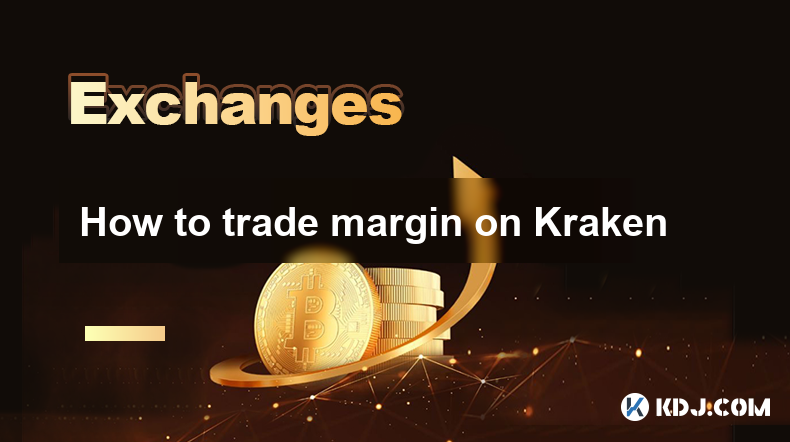
Trading margin on Kraken can be an effective way to leverage your investments in the cryptocurrency market. Margin trading allows you to borrow funds to increase your trading position, potentially amplifying your profits. However, it also comes with increased risks, as losses can be magnified. To start trading margin on Kraken, you need to understand the platform's margin trading rules, set up your account for margin trading, and familiarize yourself with the process of opening and managing margin positions. This article will guide you through each of these steps, providing detailed instructions and tips to help you navigate margin trading on Kraken effectively.
Understanding Margin Trading on Kraken
Margin trading on Kraken involves borrowing funds from the platform to trade larger positions than your account balance would normally allow. This can lead to higher potential returns but also increases the risk of significant losses. Kraken offers both long and short margin trading, allowing you to profit from both rising and falling markets. To engage in margin trading, you need to have a verified Kraken account and meet the platform's margin trading requirements. It's crucial to understand the concepts of leverage, margin calls, and liquidation to manage your risk effectively.
Setting Up Your Kraken Account for Margin Trading
To start margin trading on Kraken, you first need to ensure your account is fully verified. Here are the steps to set up your account for margin trading:
- Log into your Kraken account and navigate to the "Funding" section.
- Verify your identity if you haven't already done so. Kraken requires users to complete a KYC (Know Your Customer) process, which involves submitting identification documents.
- Enable margin trading by going to the "Settings" menu, selecting "Trading," and toggling on the margin trading option.
- Deposit funds into your Kraken account. You'll need to have a certain amount of funds in your account to meet the initial margin requirements.
Once these steps are completed, you're ready to start trading on margin.
Opening a Margin Position on Kraken
To open a margin position on Kraken, follow these steps:
- Navigate to the trading page and select the cryptocurrency pair you want to trade.
- Choose the margin trading option. This will be indicated by a "Margin" tab on the trading interface.
- Set your leverage. Kraken allows you to choose your leverage level, typically ranging from 2x to 5x, depending on the cryptocurrency pair.
- Enter your trade details, including the amount you want to trade and whether you want to go long or short.
- Review your order and submit it. Once your order is filled, you'll have an open margin position.
Managing Your Margin Position
Managing your margin position effectively is crucial to avoid margin calls and potential liquidation. Here are some key aspects to consider:
- Monitor your position regularly. Keep an eye on the market movements and your position's performance.
- Set stop-loss orders to limit potential losses. A stop-loss order will automatically close your position if the price moves against you by a certain amount.
- Understand margin calls. If the value of your position falls below the maintenance margin level, Kraken will issue a margin call, requiring you to deposit more funds or close part of your position.
- Be aware of liquidation. If you fail to meet a margin call, Kraken may liquidate your position to cover the borrowed funds.
Tips for Successful Margin Trading on Kraken
Margin trading can be complex and risky, but with the right strategies, you can increase your chances of success. Here are some tips to help you trade margin on Kraken effectively:
- Start small. If you're new to margin trading, start with small positions to get a feel for how leverage affects your trades.
- Diversify your positions. Don't put all your funds into a single margin trade. Diversifying can help manage risk.
- Stay informed. Keep up with market news and trends that could affect the cryptocurrencies you're trading.
- Use risk management tools. Utilize stop-loss orders and take-profit orders to manage your risk and lock in profits.
- Be prepared for volatility. Cryptocurrency markets can be highly volatile, so be ready for sudden price swings that could affect your margin positions.
Understanding Leverage and Margin Requirements
Leverage is a key component of margin trading, allowing you to control a larger position with a smaller amount of capital. Kraken offers different leverage levels for various cryptocurrency pairs, typically ranging from 2x to 5x. The amount of leverage you choose will affect your margin requirements, which is the amount of funds you need to maintain your position. Higher leverage means lower margin requirements but also increases the risk of a margin call. It's important to understand how leverage affects your trading and to choose a level that aligns with your risk tolerance.
Margin Calls and Liquidation
A margin call occurs when the value of your position falls below the maintenance margin level. When this happens, Kraken will notify you to either deposit more funds or close part of your position to meet the margin requirements. If you fail to meet the margin call, Kraken may liquidate your position to cover the borrowed funds. Understanding how margin calls and liquidation work is crucial for managing your risk when trading on margin. Always keep an eye on your positions and be prepared to act if a margin call occurs.
Choosing the Right Cryptocurrency Pairs
When trading margin on Kraken, it's important to choose the right cryptocurrency pairs. Some pairs may offer higher leverage and liquidity, making them more suitable for margin trading. Here are some factors to consider when selecting cryptocurrency pairs:
- Liquidity. Higher liquidity means tighter spreads and less slippage, which can be beneficial for margin trading.
- Volatility. While higher volatility can offer more trading opportunities, it also increases the risk of significant price swings.
- Leverage. Different pairs may have different maximum leverage levels, so choose pairs that align with your trading strategy.
- Market trends. Keep an eye on market trends and news that could affect the cryptocurrencies you're trading.
Using Kraken's Margin Trading Tools
Kraken offers several tools to help you manage your margin trades effectively. Here are some key tools and features to consider:
- Stop-loss orders. These orders can help limit your losses by automatically closing your position if the price moves against you by a certain amount.
- Take-profit orders. These orders allow you to lock in profits by automatically closing your position when the price reaches a certain level.
- Trailing stop orders. These orders adjust your stop-loss level as the price moves in your favor, helping you maximize profits while limiting losses.
- Margin calculator. Kraken provides a margin calculator that can help you understand the potential outcomes of your margin trades based on different leverage levels and price movements.
Common Mistakes to Avoid
Margin trading can be rewarding, but it's easy to make mistakes that can lead to significant losses. Here are some common mistakes to avoid when trading margin on Kraken:
- Over-leveraging. Using too much leverage can amplify losses, so be cautious about the amount of leverage you use.
- Ignoring margin calls. Failing to meet a margin call can result in liquidation, so always be prepared to act if a margin call occurs.
- Not using risk management tools. Failing to use stop-loss and take-profit orders can leave you vulnerable to sudden market movements.
- Trading without a plan. Always have a clear trading plan and stick to it to avoid impulsive decisions.
- Chasing losses. Trying to recover losses by taking on more risk can lead to further losses, so avoid chasing losses and stick to your trading strategy.
Frequently Asked Questions
Q: What is margin trading on Kraken?
A: Margin trading on Kraken allows you to borrow funds to trade larger positions than your account balance would normally allow. This can potentially increase your profits but also comes with increased risks, as losses can be magnified.
Q: How do I set up my Kraken account for margin trading?
A: To set up your Kraken account for margin trading, log into your account, verify your identity, enable margin trading in the settings, and deposit funds to meet the initial margin requirements.
Q: What is leverage in margin trading?
A: Leverage is a tool that allows you to control a larger position with a smaller amount of capital. Kraken offers different leverage levels for various cryptocurrency pairs, typically ranging from 2x to 5x.
Q: What is a margin call on Kraken?
A: A margin call occurs when the value of your position falls below the maintenance margin level. When this happens, Kraken will notify you to either deposit more funds or close part of your position to meet the margin requirements.
Q: How can I manage my risk when trading margin on Kraken?
A: To manage your risk when trading margin on Kraken, monitor your positions regularly, use stop-loss and take-profit orders, understand margin calls and liquidation, and avoid over-leveraging. Always have a clear trading plan and stick to it to avoid impulsive decisions.
Disclaimer:info@kdj.com
The information provided is not trading advice. kdj.com does not assume any responsibility for any investments made based on the information provided in this article. Cryptocurrencies are highly volatile and it is highly recommended that you invest with caution after thorough research!
If you believe that the content used on this website infringes your copyright, please contact us immediately (info@kdj.com) and we will delete it promptly.
- Dogecoin Price Soared Over 2% Today, Indicating a Renewed Market Interest in the Leading Meme Coin
- 2025-04-04 21:10:12
- Filecoin FIL $2.76 24h volatility: 2.9% Market cap: $1.79 B Vol. 24h: $489.77 M
- 2025-04-04 21:10:12
- The latest Dogecoin price prediction is raising eyebrows
- 2025-04-04 21:05:12
- With meme coins like Pepe and Shiba Inu back in the spotlight, traders are wondering which token could deliver the biggest gains this week
- 2025-04-04 21:05:12
- Market expert Ali Martinez estimates that the price of this dog-themed meme coin has the potential to surge by around 250% to touch the $0.5 level
- 2025-04-04 21:00:12
- Ethereum (ETH) price plunges further as investors limit their risk exposure
- 2025-04-04 21:00:12
Related knowledge
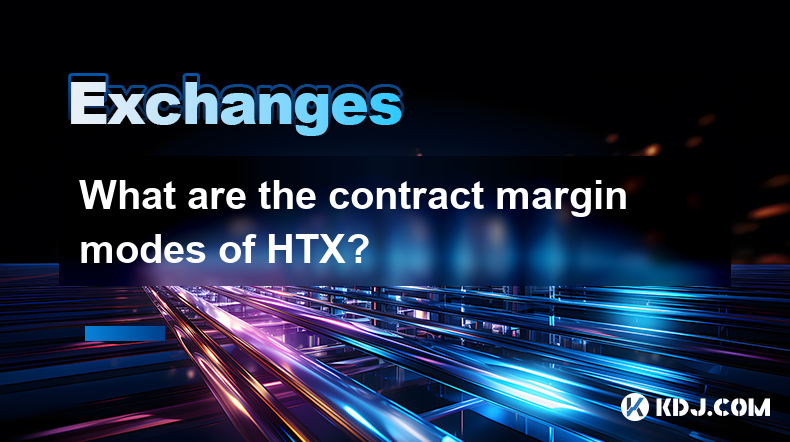
What are the contract margin modes of HTX?
Apr 04,2025 at 02:14pm
HTX, formerly known as Huobi, offers various contract margin modes to cater to the diverse needs of traders. Understanding these modes is crucial for effectively managing risk and maximizing potential returns. In this article, we will delve into the different contract margin modes available on HTX, explaining their features, benefits, and how to use the...
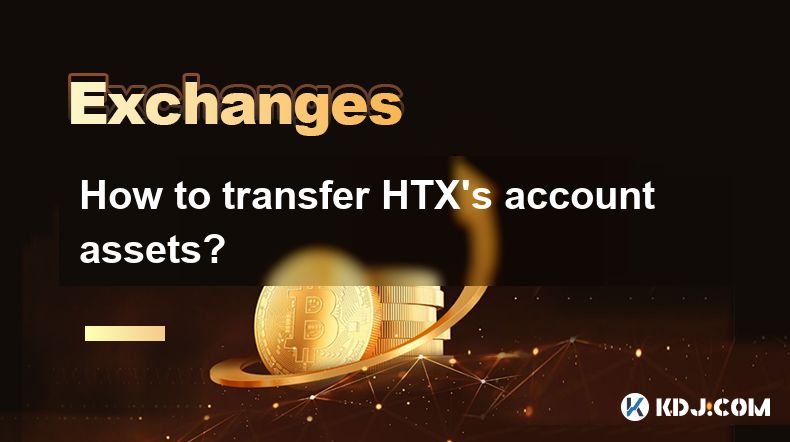
How to transfer HTX's account assets?
Apr 04,2025 at 09:28pm
Introduction to HTX and Account AssetsHTX, formerly known as Huobi, is a leading cryptocurrency exchange that offers a wide range of trading services. One of the essential functions for users is the ability to transfer assets within their HTX accounts. Whether you're moving funds between different wallets or sending assets to another user, understanding...
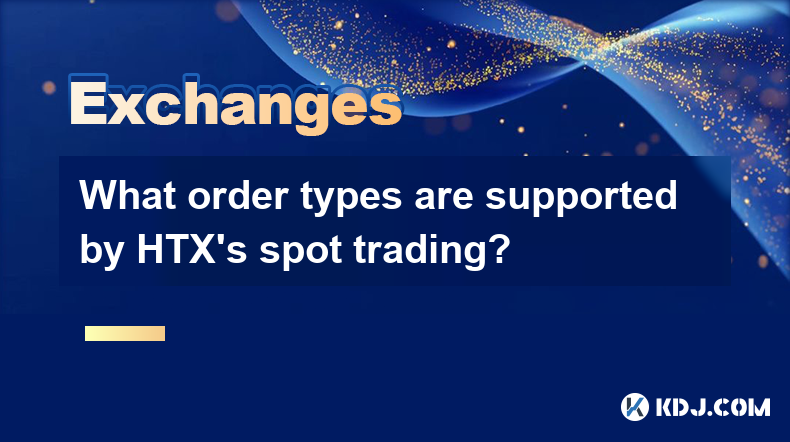
What order types are supported by HTX's spot trading?
Apr 04,2025 at 04:42am
HTX, formerly known as Huobi, is a well-established cryptocurrency exchange that offers a variety of order types for spot trading. Understanding these order types is crucial for traders looking to execute their strategies effectively. In this article, we will explore the different order types supported by HTX's spot trading platform, providing detailed ...

How to cancel HTX's stop-profit and stop-loss orders?
Apr 03,2025 at 07:50pm
Introduction to HTX's Stop-Profit and Stop-Loss OrdersHTX, formerly known as Huobi, is a leading cryptocurrency exchange that offers a variety of trading tools to its users. Among these tools are stop-profit and stop-loss orders, which are essential for managing risk and securing profits in the volatile crypto market. These orders allow traders to set p...
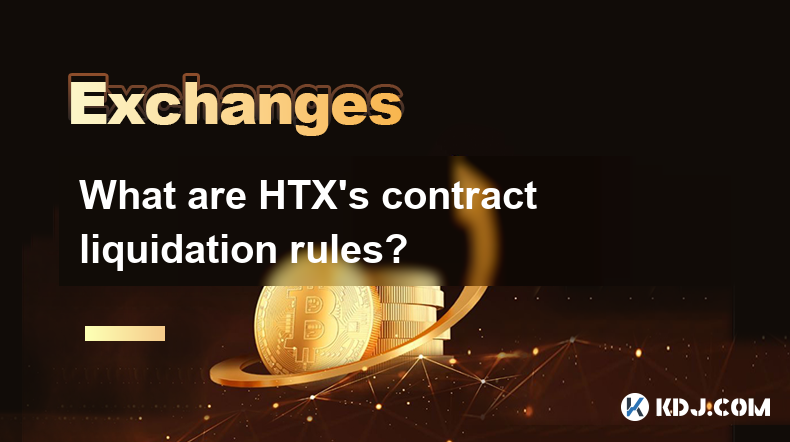
What are HTX's contract liquidation rules?
Apr 04,2025 at 10:08am
Introduction to HTX's Contract LiquidationsHTX, formerly known as Huobi, is a prominent cryptocurrency exchange known for its diverse range of trading products, including futures and options contracts. One of the critical aspects of trading on HTX is understanding the rules surrounding contract liquidations. Liquidation occurs when a trader's position i...

How to use the cross-chain charging and withdrawal function on HTX?
Apr 04,2025 at 02:50am
Introduction to Cross-Chain Charging and Withdrawal on HTXHTX, formerly known as Huobi, is a leading cryptocurrency exchange that offers a variety of services to its users, including the ability to perform cross-chain charging and withdrawal. This feature allows users to transfer assets between different blockchain networks seamlessly. In this article, ...

What are the contract margin modes of HTX?
Apr 04,2025 at 02:14pm
HTX, formerly known as Huobi, offers various contract margin modes to cater to the diverse needs of traders. Understanding these modes is crucial for effectively managing risk and maximizing potential returns. In this article, we will delve into the different contract margin modes available on HTX, explaining their features, benefits, and how to use the...

How to transfer HTX's account assets?
Apr 04,2025 at 09:28pm
Introduction to HTX and Account AssetsHTX, formerly known as Huobi, is a leading cryptocurrency exchange that offers a wide range of trading services. One of the essential functions for users is the ability to transfer assets within their HTX accounts. Whether you're moving funds between different wallets or sending assets to another user, understanding...

What order types are supported by HTX's spot trading?
Apr 04,2025 at 04:42am
HTX, formerly known as Huobi, is a well-established cryptocurrency exchange that offers a variety of order types for spot trading. Understanding these order types is crucial for traders looking to execute their strategies effectively. In this article, we will explore the different order types supported by HTX's spot trading platform, providing detailed ...

How to cancel HTX's stop-profit and stop-loss orders?
Apr 03,2025 at 07:50pm
Introduction to HTX's Stop-Profit and Stop-Loss OrdersHTX, formerly known as Huobi, is a leading cryptocurrency exchange that offers a variety of trading tools to its users. Among these tools are stop-profit and stop-loss orders, which are essential for managing risk and securing profits in the volatile crypto market. These orders allow traders to set p...

What are HTX's contract liquidation rules?
Apr 04,2025 at 10:08am
Introduction to HTX's Contract LiquidationsHTX, formerly known as Huobi, is a prominent cryptocurrency exchange known for its diverse range of trading products, including futures and options contracts. One of the critical aspects of trading on HTX is understanding the rules surrounding contract liquidations. Liquidation occurs when a trader's position i...

How to use the cross-chain charging and withdrawal function on HTX?
Apr 04,2025 at 02:50am
Introduction to Cross-Chain Charging and Withdrawal on HTXHTX, formerly known as Huobi, is a leading cryptocurrency exchange that offers a variety of services to its users, including the ability to perform cross-chain charging and withdrawal. This feature allows users to transfer assets between different blockchain networks seamlessly. In this article, ...
See all articles




















































































